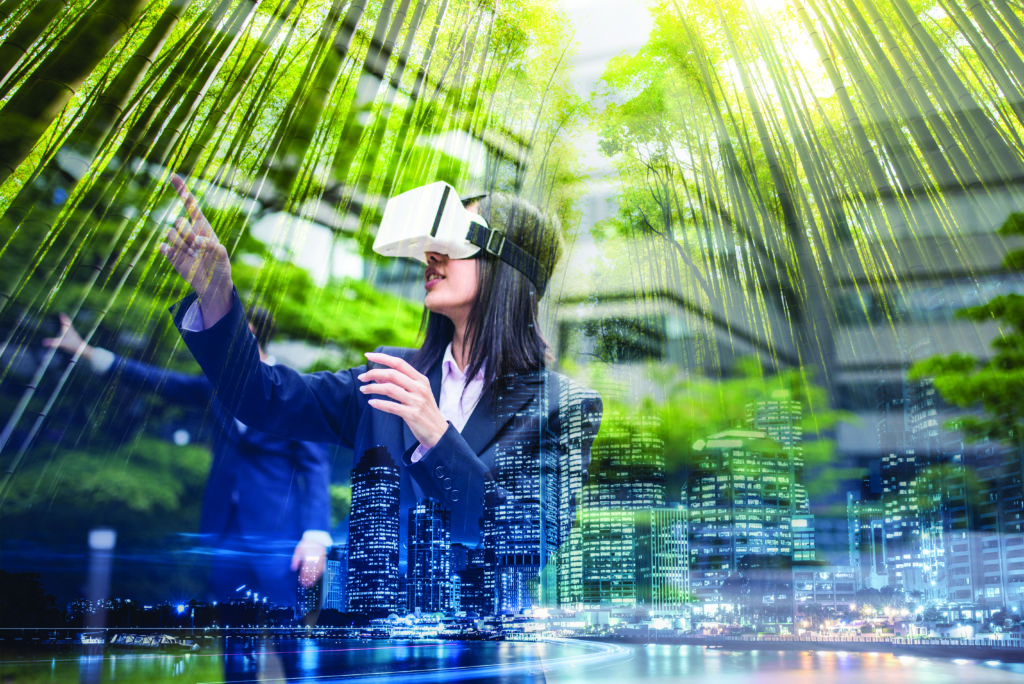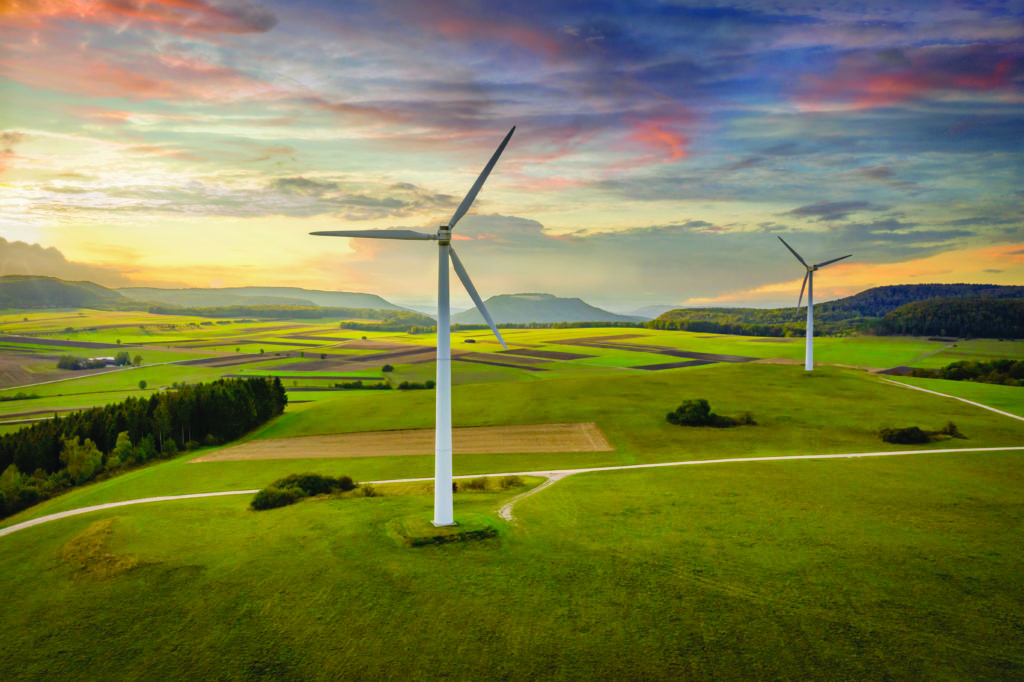Featured
Up-and-Coming Voices: The Environment and Behavioral Health
Poster presentations offer student and early-career researchers an invaluable opportunity to connect with colleagues and present their work to the broader scientific community. With many such events still taking place online, including the upcoming 2021 APS Virtual Convention, this Observer feature provides early-career psychological scientists who participated in the APS Virtual Poster Showcase with another platform to share their research. This edition spotlights a selection of research related to the environment and behavioral health.
*Boldface indicates author(s) of response

The Action-Attitude Gap in Sustainability: Connectedness to Nature Helps Mediate the Difference
Jenna Tipaldo, Naseem Dillman-Hasso, Natalia Piskorski, and Mindy Engle-Friedman (CUNY-Baruch College)
What drew you to this research?
Over the past few decades, but especially in the past few years, it has become increasingly apparent that research on the environment and the climate crisis is urgent and time-sensitive. While plenty of research exists in other spheres revolving around the gap between values and actions—such as in consumer behavior, economics, and health research—we wanted to apply this theory to environmental research in an attempt to understand how to bridge the gap between climate change beliefs and actions.
Virtual Poster Showcase
See award-winning highlights of the 2020 Virtual Poster Showcase in the July/August 2020 Observer. The 2021 Virtual Poster Showcase will be open from May 26 through September 1, 2021. Learn more about posters and other aspects of the 2021 APS Virtual Convention.
Individual behavior changes alone are not sufficient to stop climate change, as evidenced by the relatively small drop in greenhouse gas emissions even with drastic behavior changes during COVID-19 lockdowns, but individual choices still play an important role in reducing greenhouse gas emissions. As noted by the Intergovernmental Panel on Climate Change, when it comes to limiting the worst impacts of climate change, even a half-degree less of warming (1.5 rather than 2.0 degrees Celsius) can greatly reduce the severity of climate impacts. Together, the actions of many can make a difference, and through shifts in culture and market demands, individual actions can augment and even facilitate the large-scale systemic changes that are needed to reach zero emissions. Through this project, we hoped to gain insight that could help inform interventions to promote individual sustainable behaviors.
What did the research reveal that you didn’t already know?
Coming into this line of research, we expected that an individual’s locus of control would explain some of the variance in sustainable behavior. However, we were surprised to find that a person’s perceived control over the world had no impact; rather, there was a weak positive correlation between connectedness to nature and the frequency of performing sustainable behaviors. While this was not what we first hypothesized, the data did make sense—individuals who felt more emotionally connected to the natural environment may have participated in more pro-environmental behaviors because they wanted to protect the natural spaces important to them. These results help point toward strategies for more effective interventions to encourage sustainable behaviors.

The Greener, the Better: A Company’s Environmental Performance Influences Affective Commitment
Isabelle Campeau-Hunziker, Christina Andreea Popsecu, and Kaspar Schattke (Université du Québec à Montréal, Canada)
What drew you to this research?
More than ever, individuals are preoccupied by the environment and view climate change as an important issue. The popularity of green products is also growing, and sustainable products or services sold by companies such as Nike and IKEA generate more than $1 billion in revenue per year worldwide. Nonetheless, more than 95% of products that claim to be green were found to commit some level of greenwashing in 2009. Greenwashing is a strategy used to convey false impressions or false claims about a company’s products, aims, or policies in order to make them appear more environmentally friendly than they actually are. Consequently, people may come to distrust green products and stop purchasing them altogether.
Research thus far has studied the drivers of greenwashing in products, services, and organizations. To our knowledge, no studies have examined greenwashing’s consequences on job seekers and their emotional ties to a company. The present research investigated (a) affective commitment to the company depending on its environmental performance and (b) the mediating role of the perception of greenwashing.
What did the research reveal that you didn’t already know?
Our results indicated that a company’s positive environmental performance is associated with lower perception of greenwashing, which in turn is associated with higher affective commitment. Bad environmental performance is associated with higher perception of greenwashing, which in turn is associated with lower affective commitment. This suggests that companies could use green initiatives to make future job seekers feel more emotionally connected to the organization.

Modern Problems Require Modern Solutions: Nature Exposure Through Virtual Reality
Amy Knepple Carney, Grace Hudson, and Sedona Sig (University of Wisconsin-Oshkosh)
What drew you to this research?
My two main research interests are healthy aging and well-being, and the connection that humans experience with nature. We know that spending time in the natural world is beneficial for well-being, but I started to wonder about people who are place bound, especially older adults, and how they could still experience the benefits of spending time with nature. My mentor at West Virginia University, Julie Hicks Patrick, was starting to explore virtual reality and awe, and this made me wonder how virtual reality could be used for nature exploration. By studying how people experience nature through virtual reality, I hope to help people maintain or enhance well-being, especially those people who may not be able to experience “real” nature in person.
What did the research reveal that you didn’t already know?
Research has shown the benefits of empathy for and connection to nature; they increase pro-environmental behaviors and increase positive affect and life satisfaction. Spending time in nature increases those effects, but the current study expands on that research by examining if spending time in virtual nature increases empathy, awe, and connection to nature. We found that after spending only 10 minutes in virtual nature, participants demonstrated increases in connection to nature, awe, and empathy for nature. This shows that even small amounts of virtual nature can have beneficial effects. We will continue to expand on this research and add to the literature by examining which types of virtual nature have the greatest impact on well-being.

The Criticism After the Storm: Biased Judgments and Attitudes About Hurricane Victims
Jeremy V. Hermanson, Desiree K. Miranda, and Elizabeth R. Spievak (Bridgewater State University)
What drew you to this research?
I was interested in the role that implicit bias might play in a study my mentor and lab had worked on previously. In that study, participants described survivors who evacuated ahead of severe storms (“leavers”) as “smart” and “responsible,” but those who did not evacuate (“stayers”) were victim-blamed, criticized, and described as having diminished agency; one of the most commonly used terms was “dumb.” In reality, many people are often unable to evacuate—maybe they have nowhere to go, or no way to get there. It’s easy for an observer to apply standards of the “right” way to act when the decision was not theirs to make. The bias has implications for individuals, but it also may influence governments and organizations. Hurricanes Katrina and Maria prompted suggestions that the socioeconomic status and the race and ethnicity of survivors played a role in how officials responded. People who do not evacuate are already denigrated, but I wondered if observers judged them even more severely if they thought the survivors were people of color.
What did the research reveal that you didn’t already know?
We never explicitly identified the ethnicity of the leavers and stayers; we only used names that suggested the survivor might be White (e.g., “Ashley”) or Black (e.g., “Ashante”). We replicated the previous findings in that stayers were criticized, and we also found that the mere suggestion that the survivor could be a person of color produced significant differences: Participants were more likely to generate negative descriptors regarding competence (e.g., “stupid’) and socioeconomic status (e.g., “unfortunate”). We often see that underrepresented groups suffer poorer outcomes during crises (the COVID-19 pandemic is another example), and work like ours may be able to help address underlying biases in public policy or relief efforts. We are continuing our research, and we encourage others to examine victim-blaming and prejudice against crisis survivors.

Positively Valent Images of Climate Change Solutions Capture Attention
Hannah Kaull, Mason Steinhauer, Abbey Zigarac, Jacqueline Cammarata, and Joshua Carlson (Northern Michigan University)
What drew you to this research?
Learning how to capture the attention of others to convey a meaningful message is an incredibly valuable tool nowadays. We are constantly bombarded with stimuli that are pressing for our attention. It can be a challenging prospect to get people to listen and pay attention to one more thing. I became intrigued with this research because I wanted to learn how to most effectively communicate with an audience. Climate change is an ever-pressing issue that only continues to manifest with time. Often, many people feel this issue is too overwhelming and do not know how to do something about it. Therefore, the problem continues to grow with nothing being done. However, if we could come up with a way to draw people’s attention, we could see long-lasting impacts.
What did the research reveal that you didn’t already know?
Overall, we learned that people pay more attention to positive images regarding climate change over negative images. Positive images are thought of as solutions to climate change (e.g., windmills and solar panels). Negative images include both the causes and effects of climate change (e.g., smokestacks and rising sea levels). This helps when we are looking at how to best communicate the issue of climate change. If people are more drawn to solutions, then it would be best to include positive images when discussing climate change.

Saving the Planet Starts in the Classroom:
The Impacts of Infusing Climate Change Modules Within Psychology Curriculum
Brittany Burns, Maureen W. Erber, Amanda A. Dykema-Engblade, Lorilene Cuevas, Christopher Merchant, and Masami Takahashi (Northeastern Illinois University)
What drew you to this research?
This research felt important to us because we share great concern for the future of our planet, and we wanted to find a way to help people understand the reality and impact of climate change. As we started to look into why it’s so difficult to effectively communicate the threat of climate change to the general public, we found a plethora of literature describing complex internal, sociocultural, political, and economic barriers that inhibit the development of pro-environmental attitudes and behaviors that would help combat it. We wanted to find a method that could help simplify and address these overwhelming challenges while reaching a population with a wide range of environmental values and beliefs. Classroom infusions provided a way for us to expose students in a non-environmental major to climate science information by combining psychology lessons with discussions that included basic facts about climate change. We had hoped these exposures would help socially normalize climate change discussions, therefore promoting a positive change in attitudes and behaviors aimed at helping the environment.
What did the research reveal that you didn’t already know?
We learned that the presence of pro-environmental social norms has a positive impact on individuals’ concern for the environment and belief in climate change science. There is ample scholarship demonstrating the influence of social norms on individual attitudes regarding other topics, and we were pleased to find that this also applies to attitudes toward climate change. Our methodology was affected by the abrupt change to remote learning last year, so it is unclear if the pandemic impacted the effect of the modules on developing social norms. We believe it would be worthwhile to develop new, uniform modules that focus on the development of these norms in the classroom in future research.

Eco-Feedback, Pro Environmental Behaviors, and Energy Consumption
Noa Leiter and Nils Olsen (The George Washington University)
What drew you to this research?
The increasingly salient and urgent threat of climate change catalyzed my desire to participate in the global imperative to drastically cut CO2 emissions. Through my senior thesis at The George Washington University, I learned that electricity use in commercial buildings is responsible for a large percentage of U.S. energy consumption and that user behavior can have an important impact on emission reduction. I was eager to understand how organizations were working to reduce their emissions and how they could capitalize on technology to motivate employees to reduce their individual consumption behavior.
What did the research reveal that you didn’t already know?
Our research revealed that if individuals hold sustainable values, feel capable of reducing energy use, and plan to reduce workplace energy use, then they tend to be less concerned about privacy regarding energy monitoring. It also revealed that individuals tend to support the idea of department/group energy-use monitoring more than individual energy-use monitoring. This underscores the importance of finding the most effective way to implement and communicate about electronic monitoring systems in organizations to ensure employee well-being and to have the largest impact on employee behavior. We encourage other researchers to further examine electronic energy-use monitoring to inform best practices for implementation.
Feedback on this article? Email apsobserver@psychologicalscience.org or scroll down to comment.





APS regularly opens certain online articles for discussion on our website. Effective February 2021, you must be a logged-in APS member to post comments. By posting a comment, you agree to our Community Guidelines and the display of your profile information, including your name and affiliation. Any opinions, findings, conclusions, or recommendations present in article comments are those of the writers and do not necessarily reflect the views of APS or the article’s author. For more information, please see our Community Guidelines.
Please login with your APS account to comment.